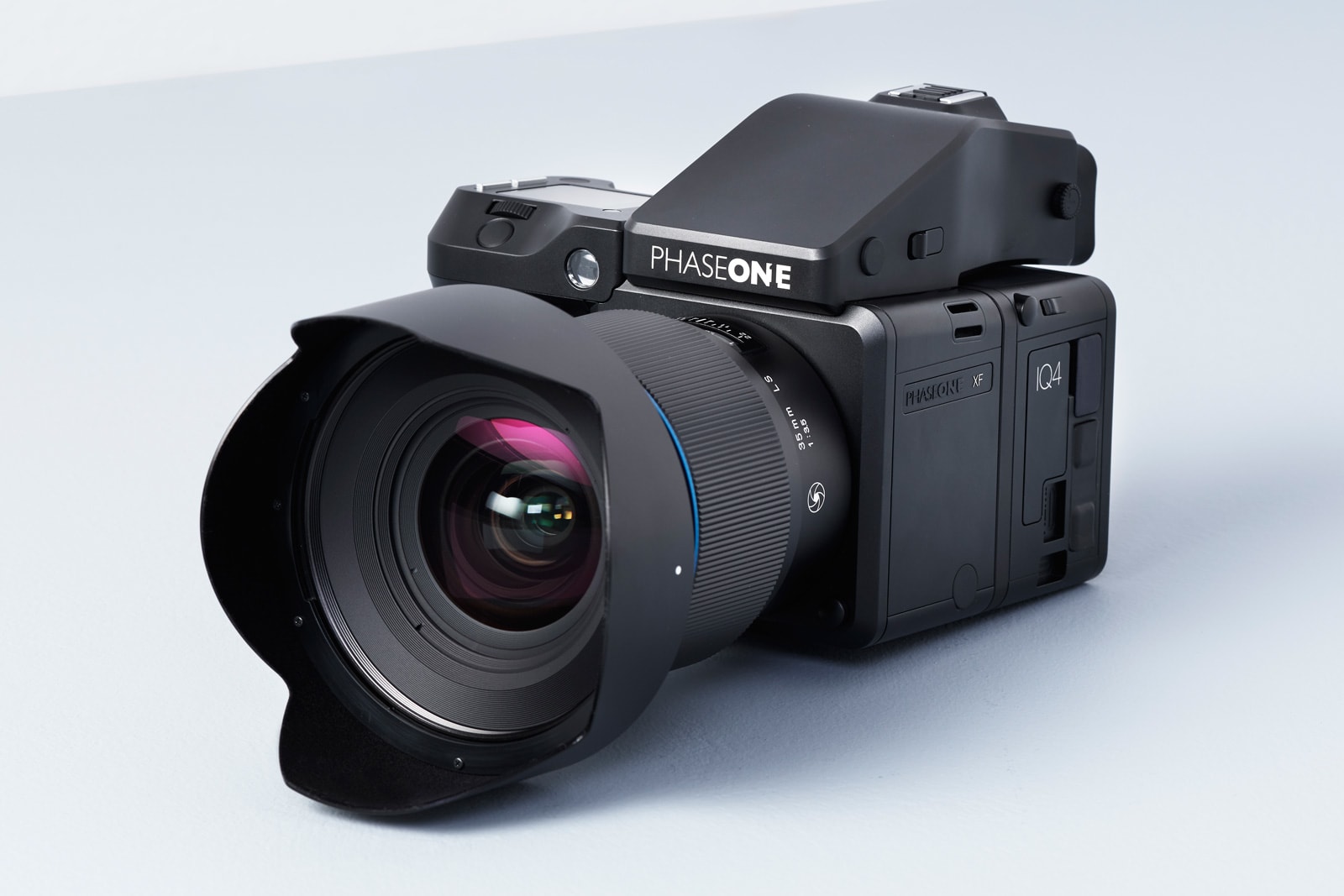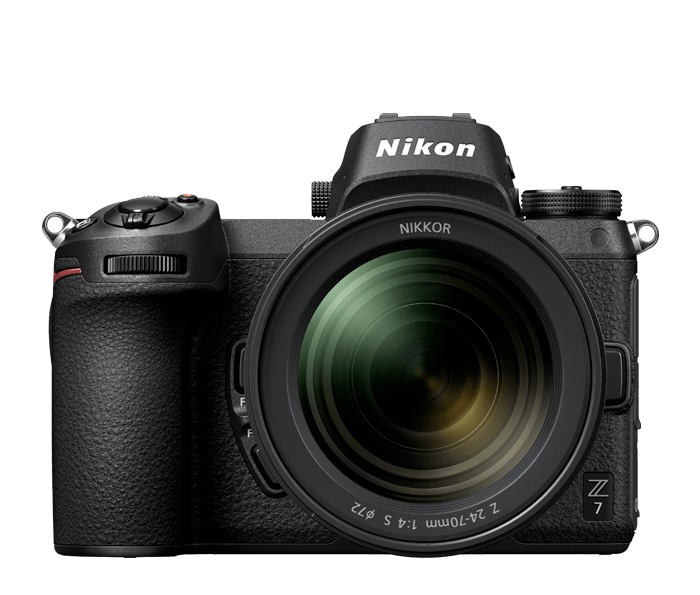Canon vs. Nikon: Everything you need to know about the camera heavyweights
Canon vs. Nikon: Zooming in on a longstanding camera rivalry
 Hillary Grigonis/Digital Trends
Hillary Grigonis/Digital Trends
History
Nikon is the older of the two companies, having celebrated its 100th anniversary in 2017, but didn’t produce its first camera until more than a decade after Canon did, in 1948. The company started as an optical instrument and glass company, lunching its line of Nikkor lenses (which continues to this day) in 1932, before its first camera. Nikon even made lenses for early Canon cameras. The company’s history includes landmark cameras like the Nikon F, which introduced the F-mount still in use today; sending cameras into space with NASA; and technological achievements like developing Extra-low Dispersion (ED) glass. Today, besides cameras, Nikon also produces products in the healthcare, precision equipment, and industrial industries.
Current camera series
Canon’s DSLRs start out with the Rebel series — these are the more basic camera bodies that are ideal for beginners. The company’s high-end DSLRs have single digit numbers followed by the letter D, with the lower numbers being more advanced, all the way up to the flagship EOS-1D X Mark II. Mid-level DSLRs have two digit numerals in the name.
Canon’s mirrorless line keeps the EOS designation, with the EOS R and EOS RP full-frame cameras. The company’s EOS M line use smaller APS-C sensors. Note that all three — EOS, EOS R, and EOS M — use different lens mounts, however. Canon’s point-and-shoot cameras use PowerShot name.
Nikon’s professional flagship DSLR is the D5, while the remaining full-frame DSLRs are designated by a three-digit number like the D850. Crop-sensor DSLRs use four-digit numbers in the name, with the exception of the D500. The D3000-series is the most basic, followed by the D5000 series for beginners and users on a budget, and the D7000 series for enthusiasts and more advanced users.
For mirrorless, Nikon has the Z 6 and Z 7, with the Z 7 being the more advanced of the two. (The Nikon 1 mirrorless series has been discontinued). Nikon’s point-and-shoot cameras use the Coolpix name.
While there’s usually a competing model for the two brands in DSLRs, mirrorless is a bit different due in part to the shorter history. Canon has an entire line of APS-C mirrorless cameras while Nikon only has two full-frame models. The companies’ full-frame mirrorless cameras don’t directly compete, either. Nikon has the 45-megapixel Z 7 at around $3,400 and the 24Mp Z 6 at $2,000 that both use the same, professional-level body and design. Canon has the 30MP, $2,300 EOS R targeted to professionals, and the the $1,300 EOS RP which uses a different design and control layout and targets beginners.
Innovation
Canon has been among the top five companies for the number of U.S. patents for 32 years in a row. A handful of those patents end up becoming features inside the company’s DSLRs and mirrorless cameras. Dual Pixel autofocus (DPAF), for example, splits pixels into two halves to allow for on-sensor phase-detection — it’s a type of autofocus system that allows mirrorless cameras to perform as well as DSLRs (and sometimes better).Nikon may not break records for patent filing, but the company is sometimes more willing to take a risk with new features. For example, Canon has been slow to add professional video features into its still cameras — probably in part wanting to avoid cannibalizing their own high-end cinema line — while Nikon has surged ahead with video features in its latest products.
Image quality
If you look at sensor performance measurements, like those from DxOMark, you’ll notice there are some objective differences — on average, Nikons tend to rate higher for dynamic range, for example — but these numbers can be misleading as they don’t necessarily translate into a noticeable real world difference. What matters more is the effort you put in to creating a good photograph.
Video
A few years ago, Canon was well out in front when it came to video. Now, that lead has disappeared — and in the case of mirrorless, Nikon has clearly sprinted to the front. Both Canons and Nikons will shoot some good video, but as Nikon has no competing cinema camera line, it is free to incorporate higher-end video features into its still cameras. Comparing the current full-frame mirrorless options, the Nikon Z 6 and Z 7 can use the full sensor for video, while the Canon EOS R uses a 1.7x cropped region for 4K. The Nikons will soon be able to output RAW video, as well, becoming the first hybrid mirrorless cameras to do so.Design
The mode dials also look a little different. The four manual modes on a Nikon camera are called the exact same thing as the manual modes on a Sony, Fujifilm, Panasonic, or Olympus: Aperture Priority (denoted by an A on the mode dial), Shutter Priority (represented by S), Program Auto (P), and full Manual (M).
Canon had to go and be different, using Aperture Value (Av) rather than the standard aperture priority. Shutter priority instead becomes Time Value (Tv). The actual functionality of these modes is exactly the same. A/Av let you set the aperture manually while the camera adjusts shutter speed to compensate, while S/Tv let you set shutter speed and the camera compensates with the aperture automatically.
Lenses

When it comes to the younger mirrorless systems, both Canon and Nikon have a lot of catching up to do. Canon started out on the high end with some very good — but very big and expensive — lenses, whereas Nikon started with more compact and relatively affordable options. Fortunately, each company offers an adapter that lets you mount its DSLR lenses on its mirrorless bodies without sacrificing any functionality.
Price
Is one brand more affordable than the other? Perhaps, though that’s largely dependent on factors like sales and what type of camera you’re eyeing.Currently, Nikon has the cheapest current-model DSLR with the D3500 listing for $500 with a kit lens. The entry-level Canon, on the other hand, lists for $750 with a kit lens, but it offers a few more features, including 4K video. For full frame, both companies’ entry options, the D610 and 6D Mark II, list for $1,600 body only.
For full-frame mirrorless, however, the scenario is different. The Canon EOS RP is the cheapest, current-model, full-frame camera ever made, and a fair margin less than the Nikon Z 6, at just $1,300 compared to $2,000. The RP, however, is missing many features compared to the Z 6, and is meant for a different audience.
Lenses follow the same sort of variation. Canon’s 50mm f/1.8 is cheaper than Nikon’s, as is its 70-200mm f/2.8, but Nikon’s stabilized 70-300mm budget lens is $150 less than Canon’s. Sometimes, the price difference is indicative of a quality difference; other times, it may just be marketing at work.
So who wins?
Brand hopping is expensive once you’ve committed to an interchangeable lens system — but how much does choosing between Canon and Nikon really matter? For most people, the answer is very little. Both companies make great cameras and lenses, and the best DSLR on the market tends to favor one brand one year and the other brand the next. Simply put, the people viewing your images won’t care if those pixels came from a Canon or a Nikon.While the brand doesn’t matter when it comes to taking great photos, each brand has some nuances that make a photographer favor one brand over the other. The grip and control schemes differ between the brands, and there’s slightly different terminology for some settings.
Choosing between Canon and Nikon then, tends to come down to the smaller, more minor differences between the two. Some of us shoot Nikon, for example, because the photographer who taught us shot Nikon. Some us bought into Canon because there was a great deal at the time, and we’ve been happy with the system since.
The best thing to do before committing to a brand? At the very least, head to a store that has cameras on display. (No excuses, even Walmart does this). Hold a Nikon, adjust some controls and see how the camera feels in your hands. Then, do the same thing with a Canon. An even better option is two rent one of each and shoot with each camera for a few days — there’s a cost, of course, to renting, but it’s minimal considering the investment in lenses once you’ve committed to a brand.
The Canon versus Nikon debate is one without a definitive answer, but there is a right answer for your personal shooting style and preferences. And remember, more important than the brand on the front of the camera is the person behind it.
Editors' Recommendations
- Nikon Z 7 vs. Canon EOS R: Full-frame flagship mirrorless cameras compared
- Canon vs. Sony: Which camera brand belongs in your bag?
- Sony vs. Nikon: How to choose between two great camera brands
- Shoot like a Rebel (or a pro) with the best Canon cameras for 2019
- Light on price but rich on features, these are the best cameras for students



















































